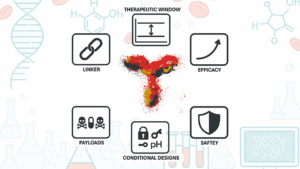How fast food hijacks young genes
Americans and Europeans love fast food, even though doctors are now more certain than ever that the highly processed meals that go hand-in-hand with a hectic Western lifestyle are not a smart health choice. The latest findings suggest that fa(s)t food imprint key genes in the innate immune system, possibly causing the permanent immunological hypersensivity that is at the root of diabetes, atherosclerosis and other common diseases of civilisation.
Eicke Latz is concerned. Especially when the renowned expert for innate immunology from the University of Bonn in Germany speaks of the first worldwide statistics on obesity in children and adolescents. It’s crucial to educate children on healthy diets, he stresses. They can’t be subject to manipulation through food industry advertising. They should be enabled to make informed choices when it comes to nutrition.
According to the very first global metaanalysis of Body Mass Index (BMI) development from 1975-2016 across the globe, which was published in the December issue of Lancet (doi: 10.1016/S0140-6763(17)32129-3), obesity is definitely on the rise. Funded by AstraZeneca, the NCD risk factor collaboration reports that 124 million youngsters between 5-19 years of age have a BMI over 30. Many of those young people live in Europe, high-wage English-speaking countries, or emerging countries. 60% of the obese youngsters will remain obese in adulthood as well, doubling their risk of developing chronic diseases. In the mid-term, that will have already cash-strapped healthcare budgets on the ropes. In Europe, treating the young obese already makes up 6% of all healthcare costs.
The future cost of diabetes alone is ruinous, even for wealthy countries like export world champion Germany. According to Michael Laxy, the head of a study group at IGM Munich that analysed diabetes costs from 2012-2015, co-morbidities such as retinopathy drive annual per patient costs of around €2,800. The growth of diabetic incidence and treatment costs like those associated with blindness (€12,000), diabetic ulcers (€5,200), foot amputation (€52,000), renal insufficiency (€92,000) and cardiovascular complications (€10,800-80,000) are expected to contribute dramatically to future healthcare expenses.
For over 10 years, researchers have known that fast food consumption correlates with obesity and impaired metabolism (Lancet, 2005; 365: 36-42). According to a 15-year study conducted by US and Norwegian researchers, people who visited fast food restaurants more than twice a week weighed roughly 4-5 kg more than those who visited them less than once a week. Insulin resistance was also twice as likely in the former.
Fast food has a lifelong impact on health.
What concerns Latz most about the fast food-obesity correlation is his own recent findings. Previous research has linked the consumption of Western-style diets to chronic subsymptomatic inflammation, which is believed to trigger diseases such as type 2 diabetes, obesity, atherosclerosis, cardiovascular disease, Alzheimer’s disease and cancer. That’s why it’s of fundamental importance to understand the mechanisms that link consumption of calorie-rich diets to increased inflammation, Latz explains.
In mid-January, his group reported in Cell (doi: 10.1016/j.cell.2017.12.013) that even transient fast food consumption could lead to permanent epigenetic reprogramming of the innate immune system. The team led by Anette Christ discovered that a four week sugar- and fat-rich diet caused acute inflammation in model mice for atherosclerosis, and that animals subsequently showed elevated levels of innate immune cells like granulocytes and monocytes. The transient fast-food diet also had a long-term effect on health that persisted even after the mice were switched back to a normal chow diet. A first analysis indicated a lasting epigenetically triggered preactivation of the innate immune system. The animals eventually died due to calcified heart vasculature after just 8 weeks.
The innate immune system never forgets
So far, innate immune cell priming – or immunologic memory’ – had been only observed after infections. Called trained immunity’, this is mediated by stress sensors in the innate immune system dubbed inflammasomes. If a pathogen invades the body for a second time, trained immunity leads to a faster and stronger innate immune system reaction compared to the initial invasion. Now, Christ et al have proved for the first time that the sensor molecules in the innate immune system also recognise fast food as pathogenic’ or dangerous’. This in turn alters gene expression patterns in innate immune-cell progenitors in the bone marrow, making the innate immune systeme more prone to activation when a subsequent alarm is sounded. Immune system hyperreactivity is a hallmark for some of the most devasting diseases of civilisation.
For the very first time, a detailed analysis of gene expression and chromatin analysis of innate immune cell progenitors carried out by Latz and his research group revealed that some burgers might imprint your immune system in a fashion that boosts your risk of getting seriously ill in adulthood. According to the immunologist, the resulting immunologic hypersensivity is a hell of a problem, because it promotes the development of major non-communicable chronic diseases with sub-inflammatory phenotypes.
In mice, the researchers observed activation of the danger sensor (the NRPLP3 inflammasome) by the transient Western diet, as well as a type I interferon response that resembled ones triggered by bacterial infections. Additionally, the animals’ monocyte/granulocyte progenitors overexpressed the proinflammatory cytokine interleukin 6 (IL-6). In cell culture experiments, the pre-primed progenitor cells showed immunological hyperreactivity after experimental exposure to antigens such as bacterial lipopolysaccharide (LPS).
Blocking activity of the NLRP3 inflammasome in progenitor cells led to complete protection from the effects of a Western diet on the innate immune system. Earlier publications had suggested that genetic alterations in the adaptor protein ASC and IL-1-RAP, an endogenous inhibitor of interleukin-1 signalling, are essential to trigger trained innate immunity. The researchers therefore speculate that IL-1b might mediate the induction of trained immunity. In fact, previous work has shown that IL-1b inhibitors prevent death in mice challenged by experimental infection, and block proliferation of immune progenitor cells. Quantitative trait locus analysis in human monocytes trained with oxidised low-density lipoprotein and stimulated with LPS also suggested inflammasome-mediated trained immunity. Small molecules that block inflammasome signalling might thus help prevent the inflammatory phenotypes triggered by a Western diet that in the end can accelerate the onset of vascular disease.
However, finding specific inhibitors is not as easy as it might seem at first glance. NLRP3 inflammasome function is triggered by a wide variety of signals indicating infection, injury, cell stress or exposure to irritants. A long-standing mystery in the field is how NLRP3 coordinates an in vivo response that is appropriate to the nature of its activating signal. The discovery – that neutrophils drive IL-1b production in response to a subset of NLRP3 agonists – provides a potential mechanism by which in vivo NLRP3 inflammasome responses can be shaped depending on the type of danger encountered.
So can I still eat burgers ?
In February, a group headed by Arthuro Zychlinski from the Max Planck Institute for Infection Biology in Berlin reported that the staphylococcal invasion factor pyocyanin inhibits the NLRP3 inflammasome by producing reactive species that block IL-1b and IL-18 release. It also inhibits pyroptosis by preventing caspase-1 maturation (JBC, doi: 10.1074/jbc.RA117.001105). Danish researchers headed by Thomas Mandrup-Poulsen reported in 2017 that caffeine counteracts NLRP3 activation (Nature Rev. Endocrinology, doi: 10.1038/nrendo.2017.175). And David Brough and Sally Freeman at the University of Manchester have reported the development of a set of boron-containing compounds that block the JNL1 kinase activity needed to kick-off NLRP3 oligomerisation.
Small-molecule inhibitor MCC950 dampens NLRP3 inflammasome signaling in mouse models of MS and other immune diseases. The compound, which blocks IL-1b release, is under development by researchers led by Luke O’Neill at Trinity College Dublin and Matthew Cooper at Australia’s University of Queensland.
or must I change lifestyles?
Latz himself is the co-founder of IFM Therapeutics, which develops antiinflammatory NLR antagonists and cancer drugs targeting the DNA sensor AIM. But when it comes to fast-food-triggered diseases, he’s 100% certain pills won’t cure unhealthy lifestyles. Instead, his focus remains on prevention. Recent analyses suggest that 42% of cancers and 30% of diabetes cases could be prevented by adopting healthier lifestyles in combination with existing prevention programmes. Our findings have important societal relevance, says Latz. The foundations of a healthy diet need to become a much more prominent aspect of education than they are at present.
Forget policy support
Studies from diabetes research organisation DGG suggest that taxes on highly sugared drinks and fattening foods might help. They argue that the food industry puts over a hundred times more money into advertising junk food than governments do into nutrition education. The EU Commission recently rejected adopting a traffic light’ food labeling system. Currently, only six European countries have a sugary drink tax, and even fewer a fat tax. So the clear health risks of fast food have yet to make a major legislative difference.


 chokniti - Adobe Stock
chokniti - Adobe Stock Yumab GmbH
Yumab GmbH Scripta Therapeutics
Scripta Therapeutics